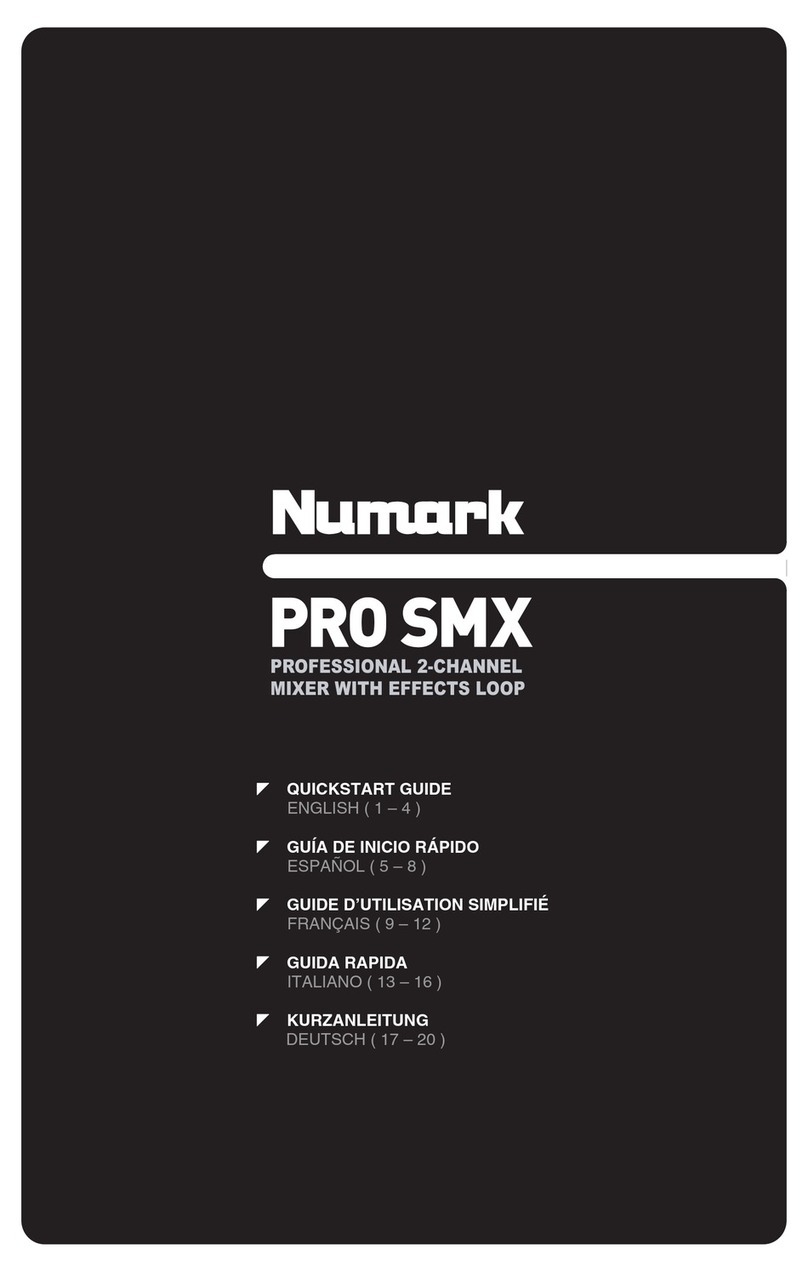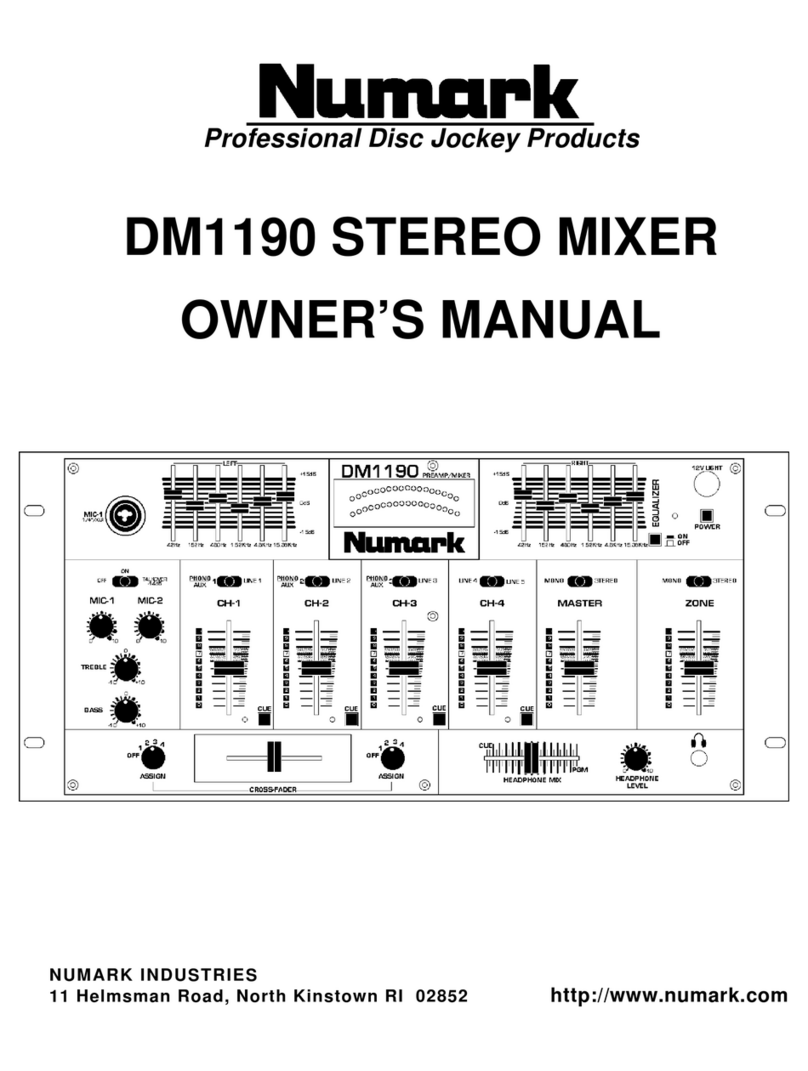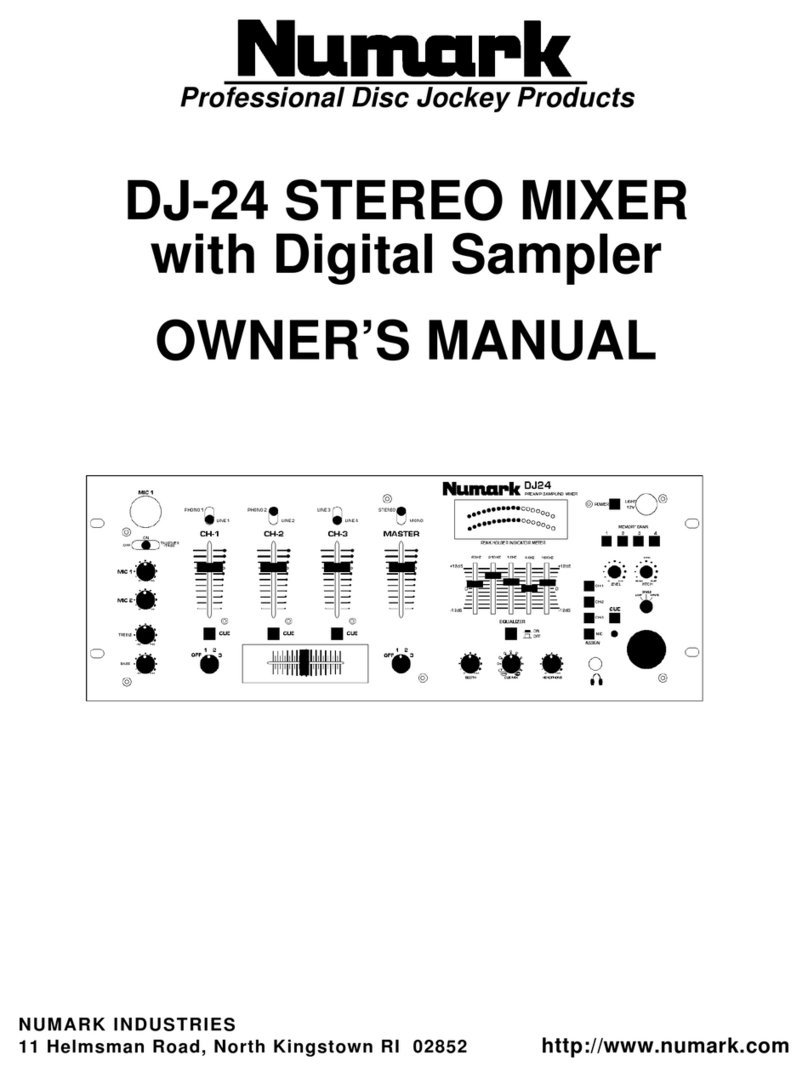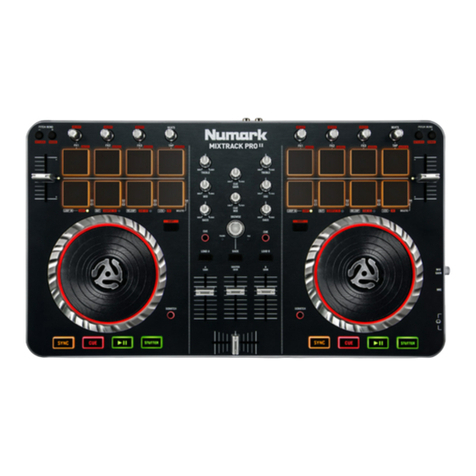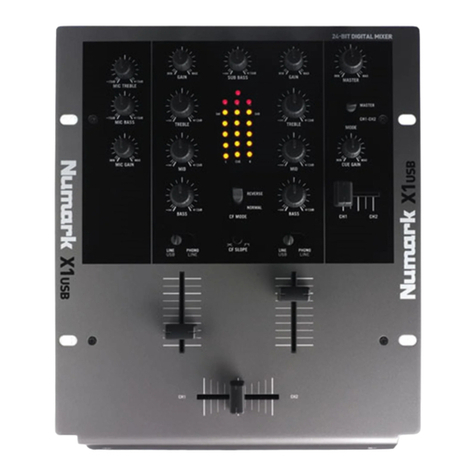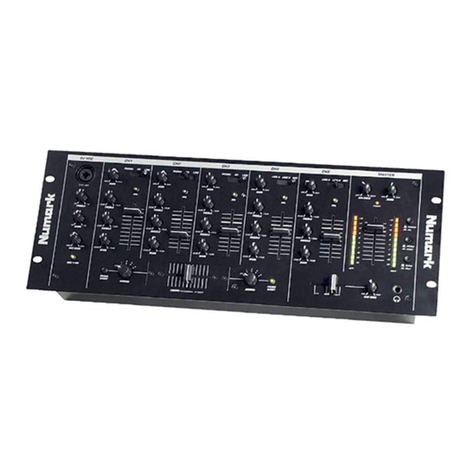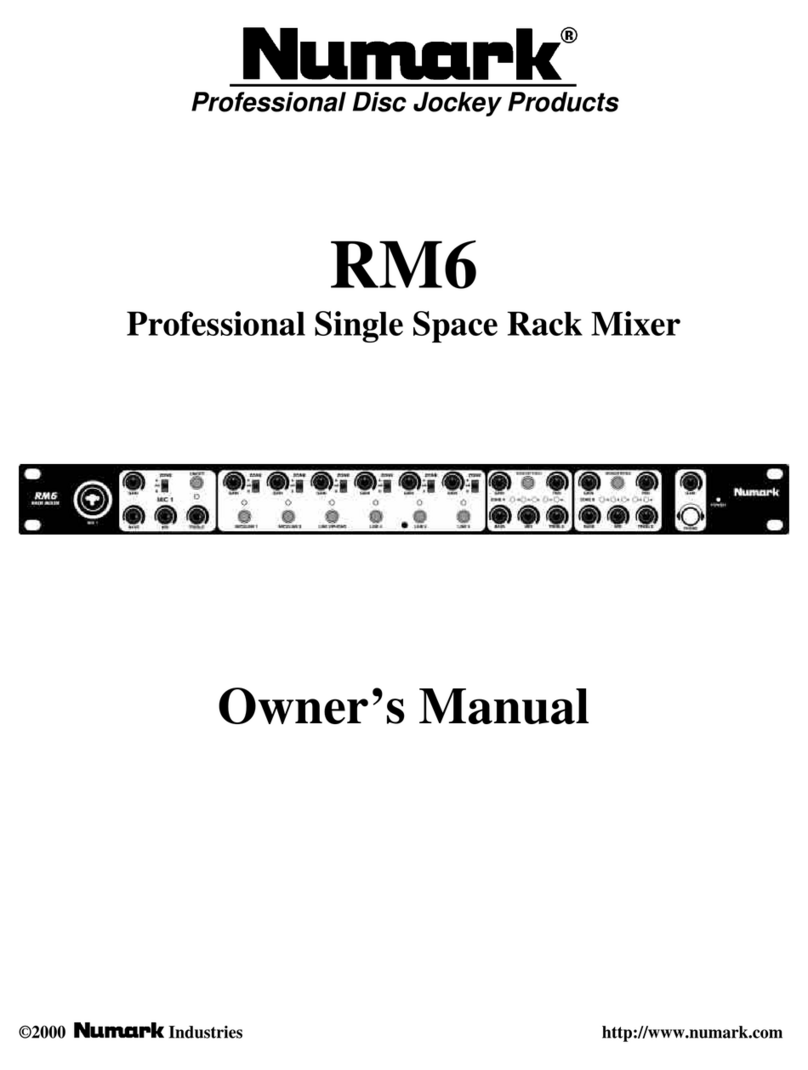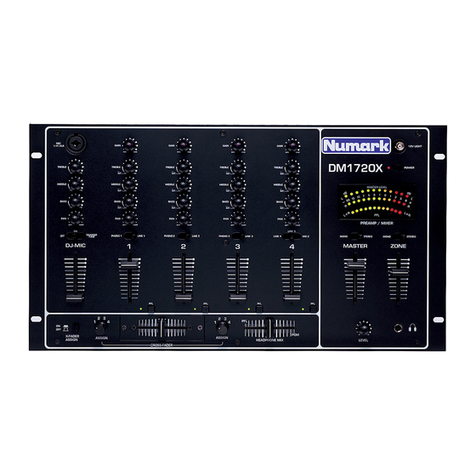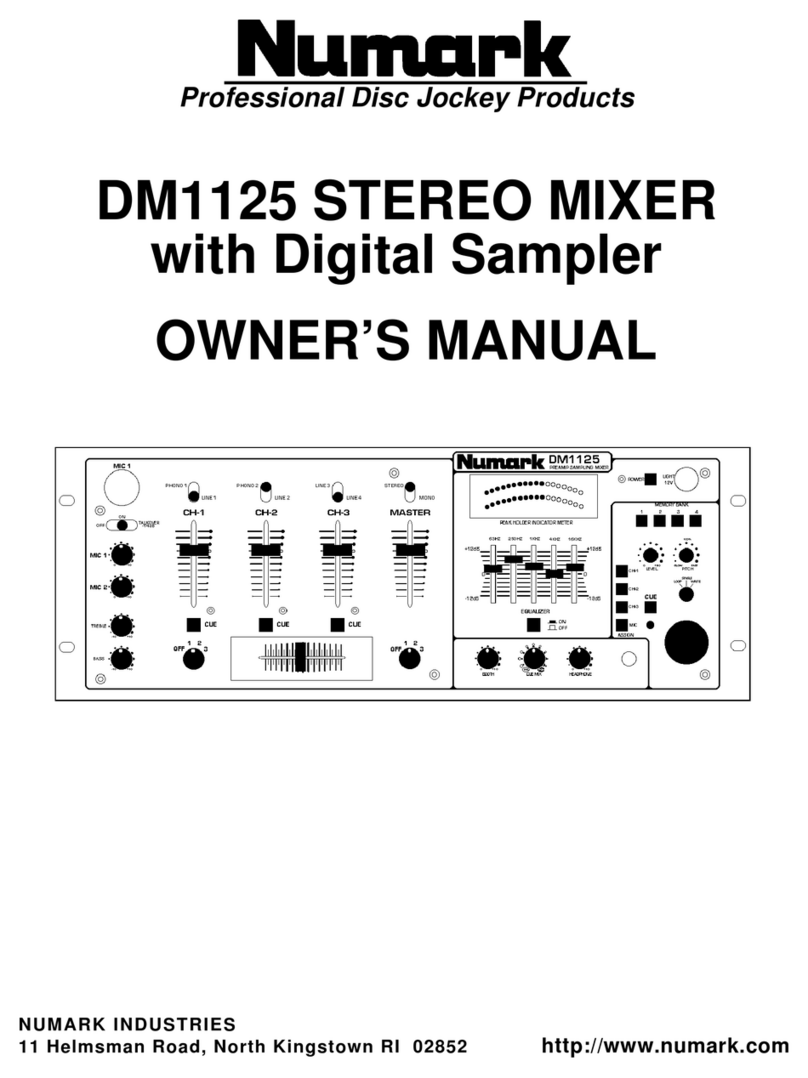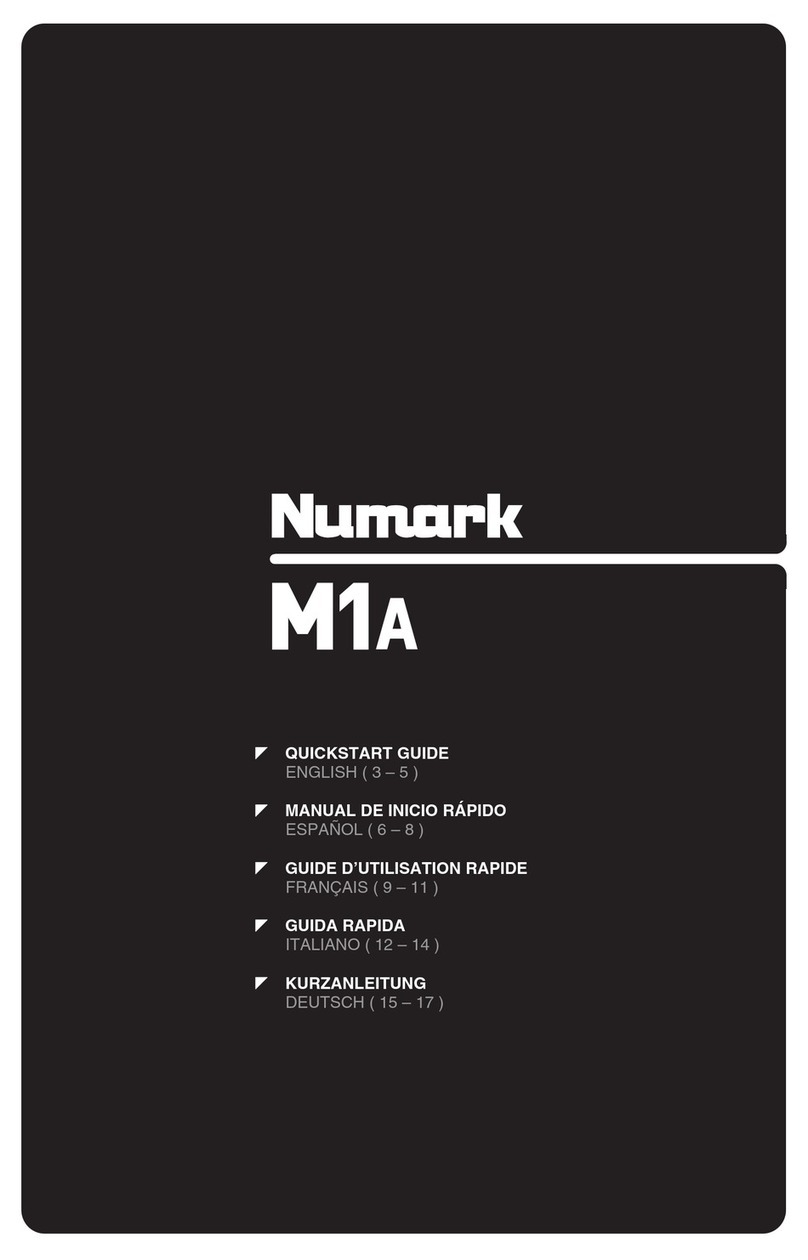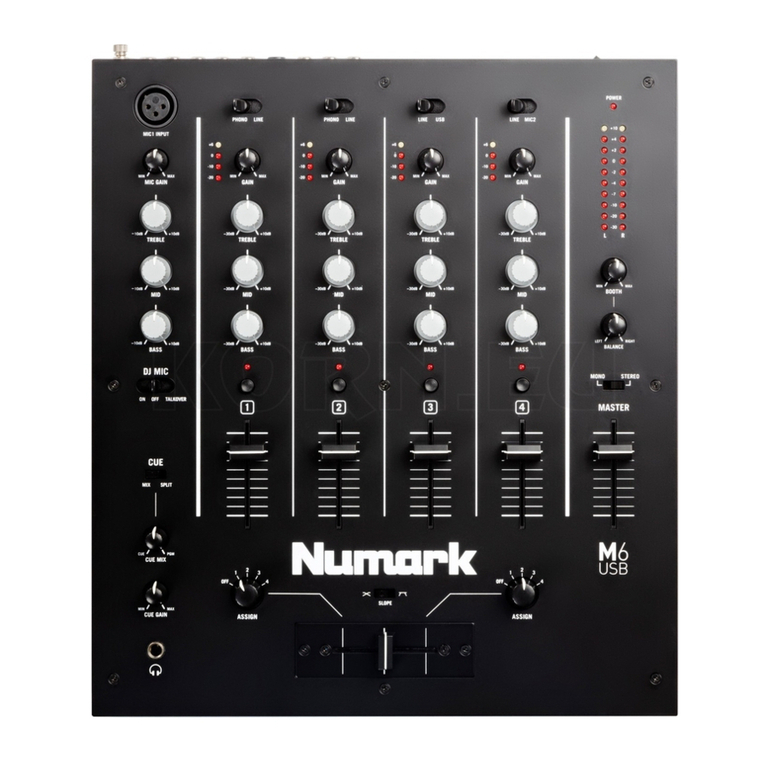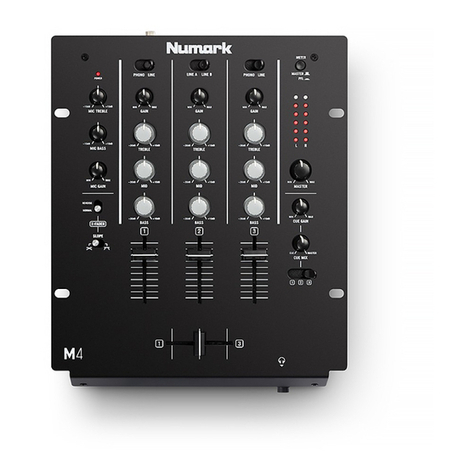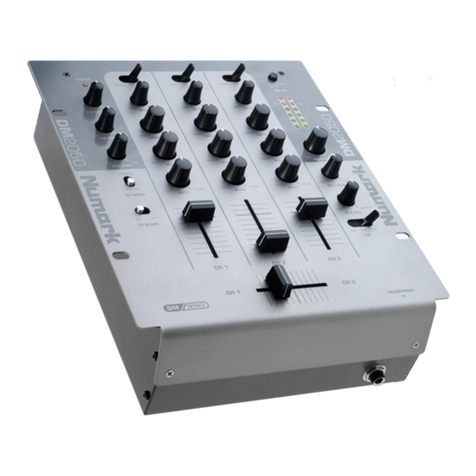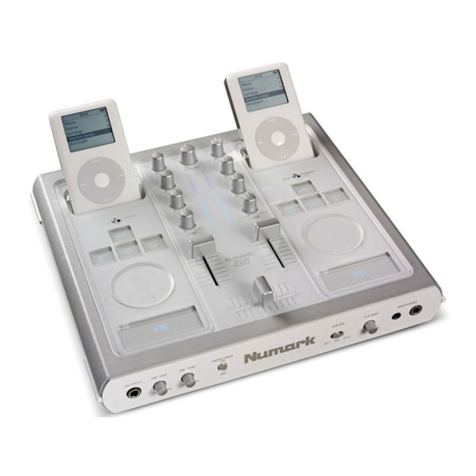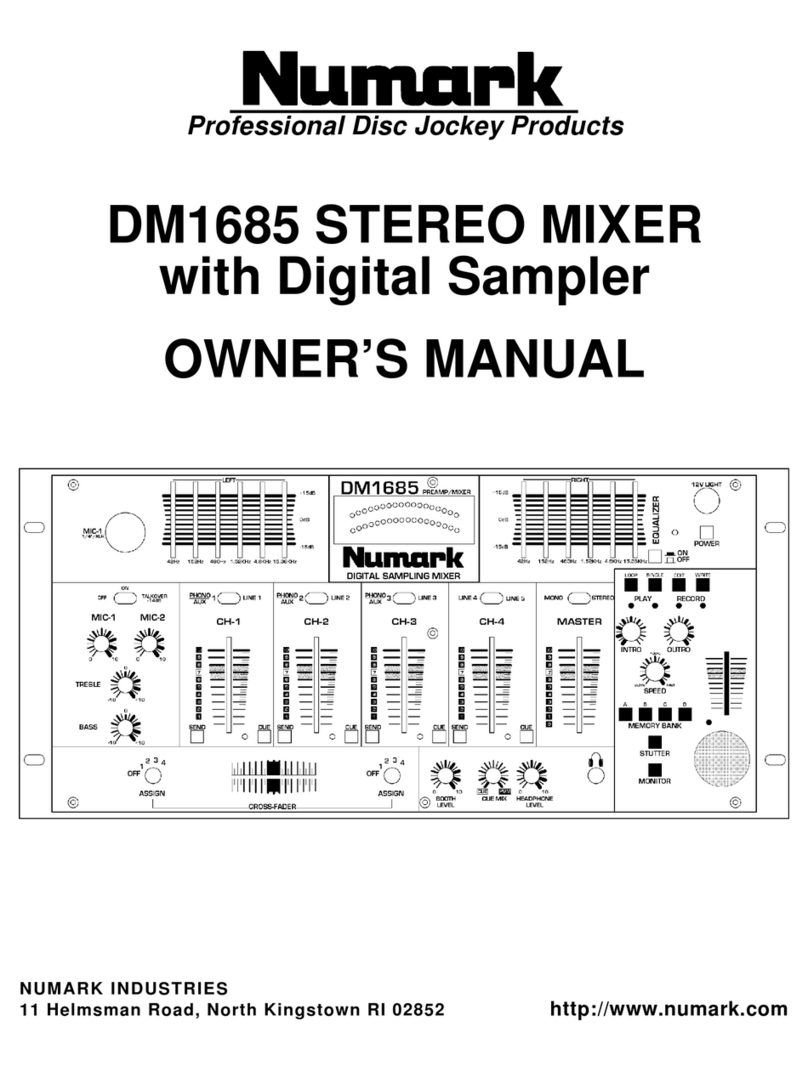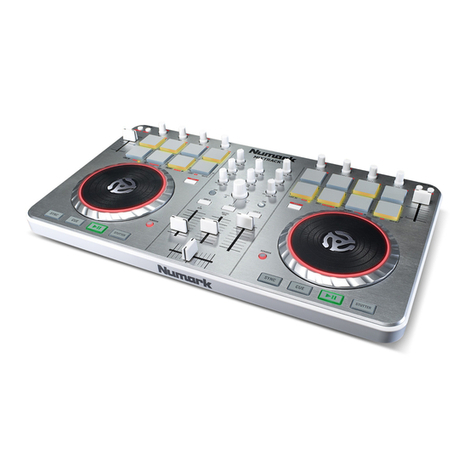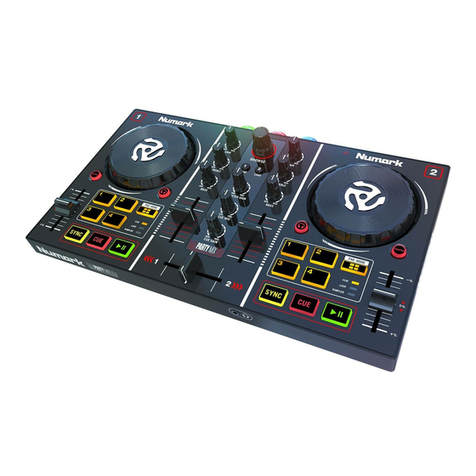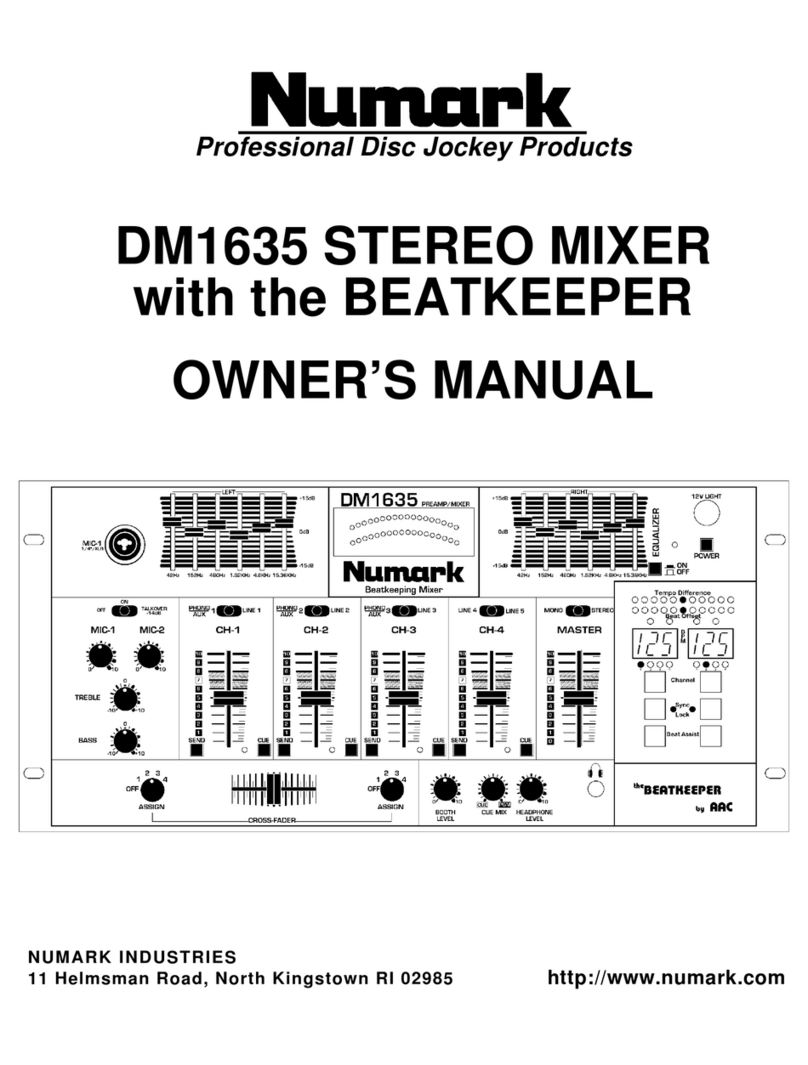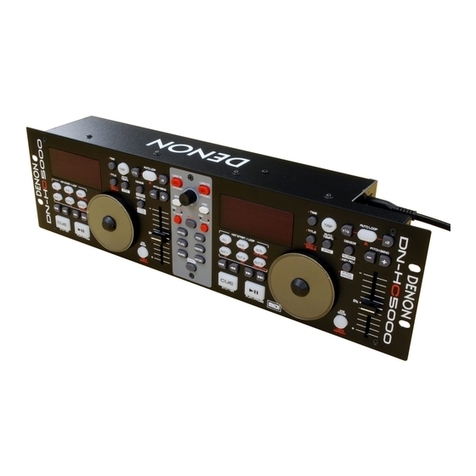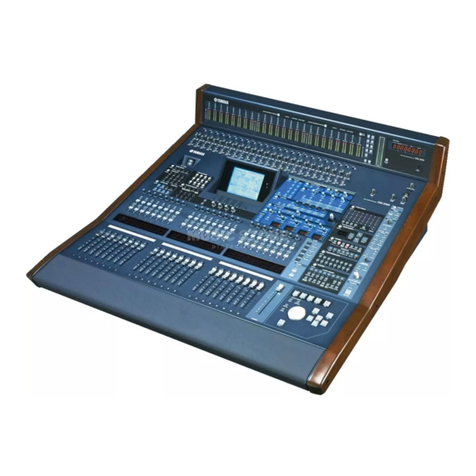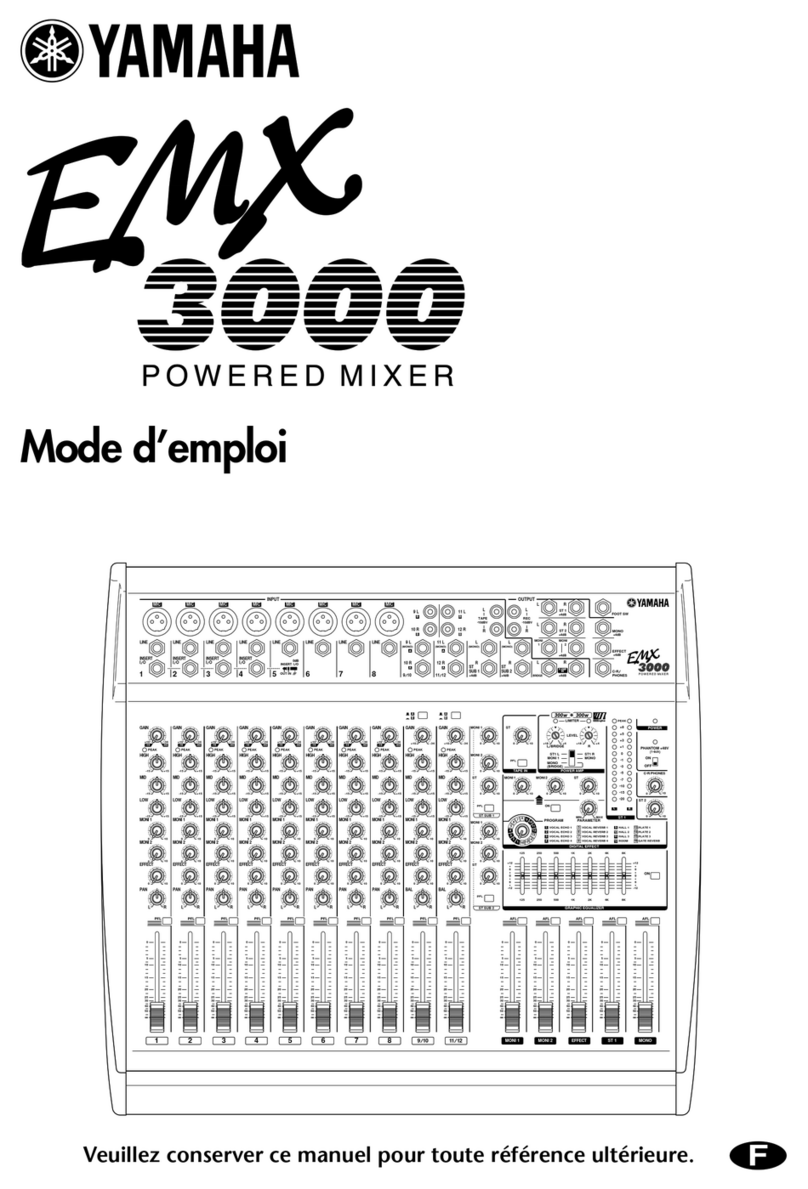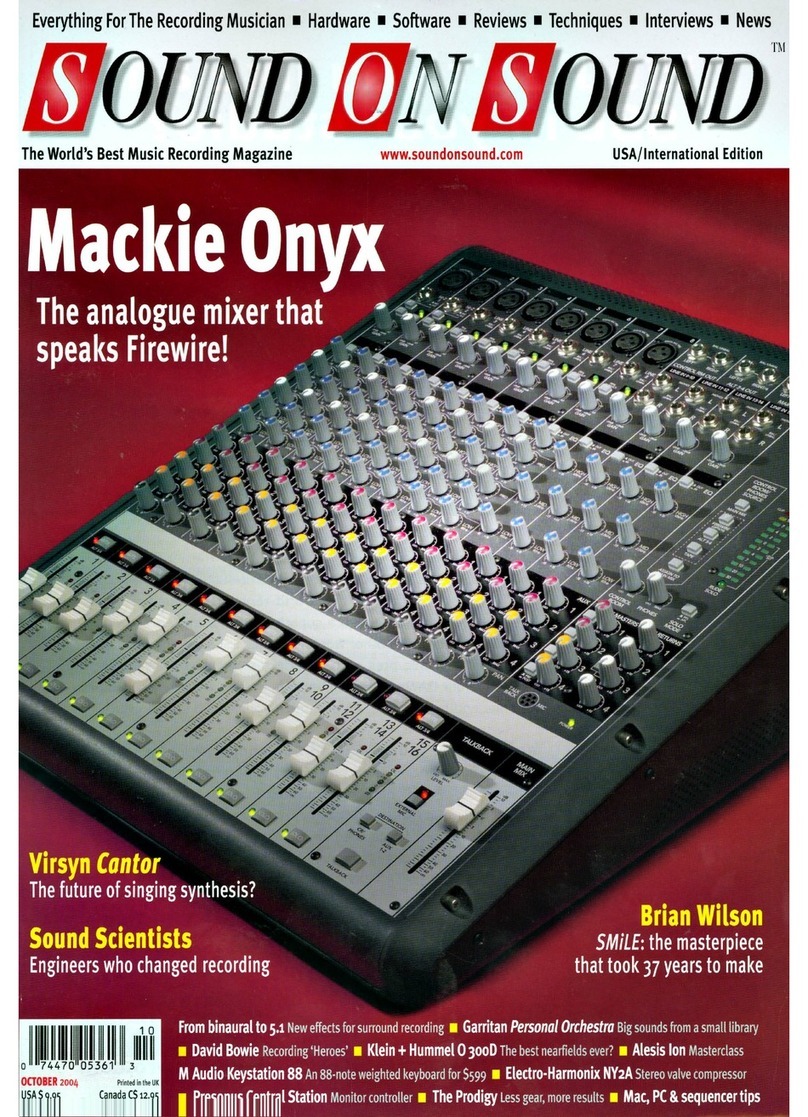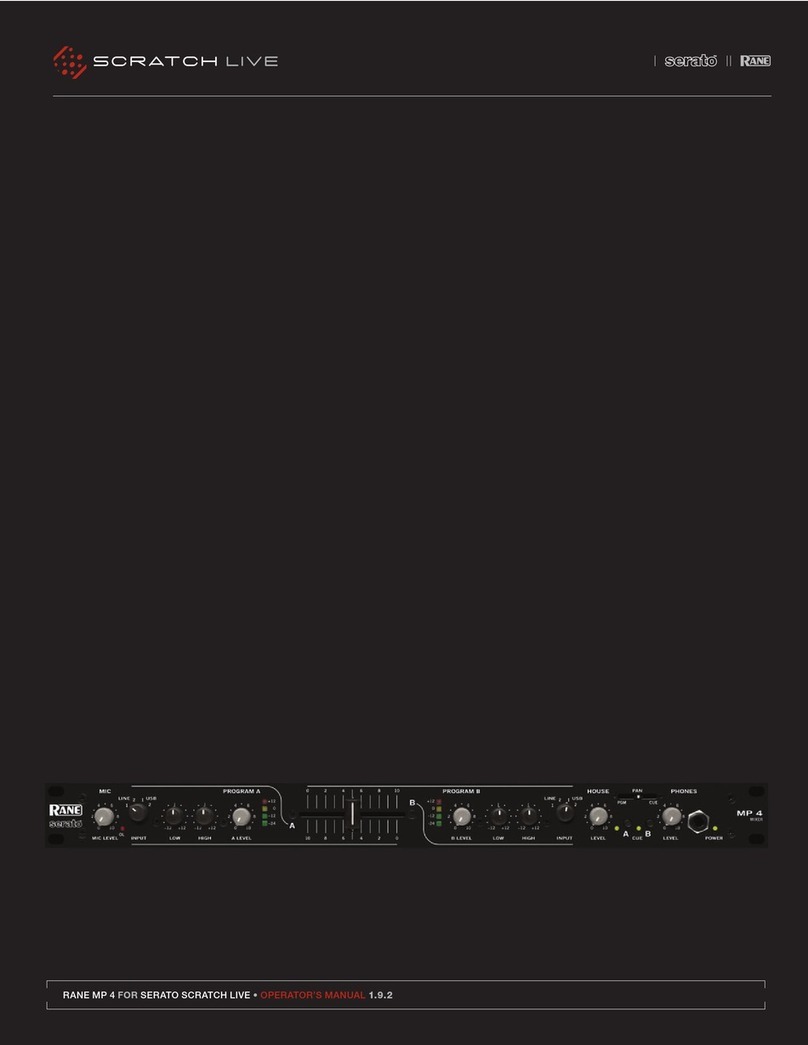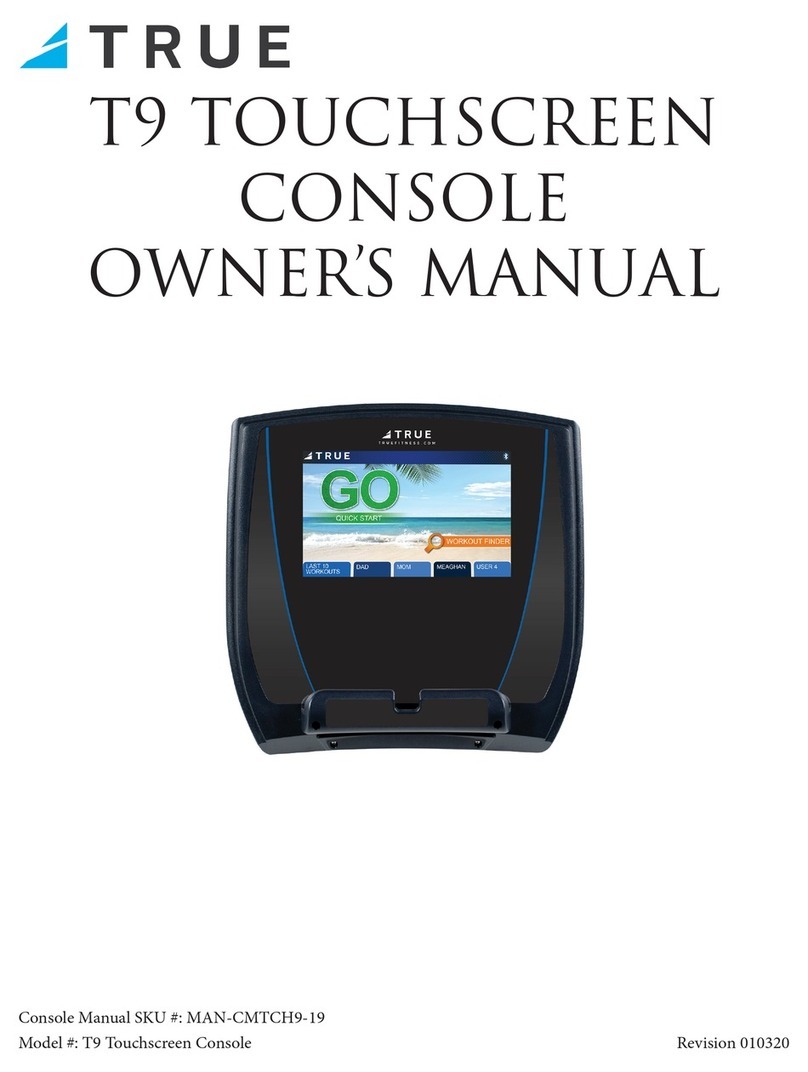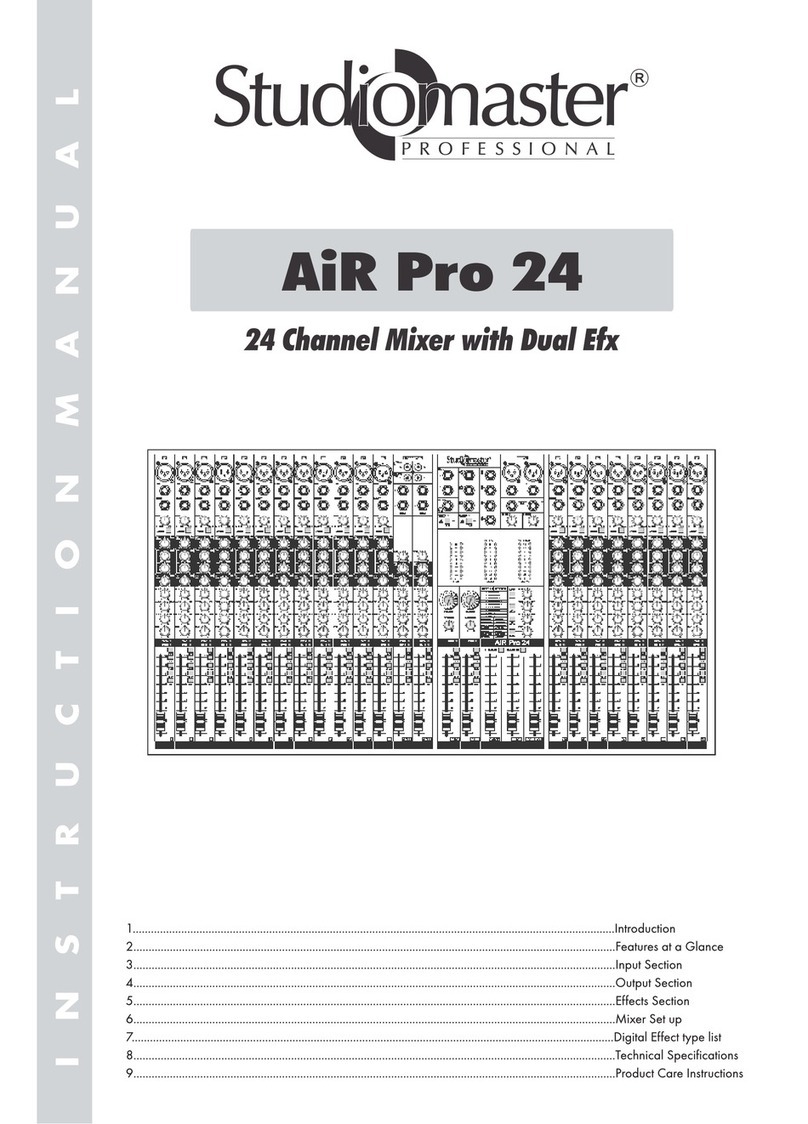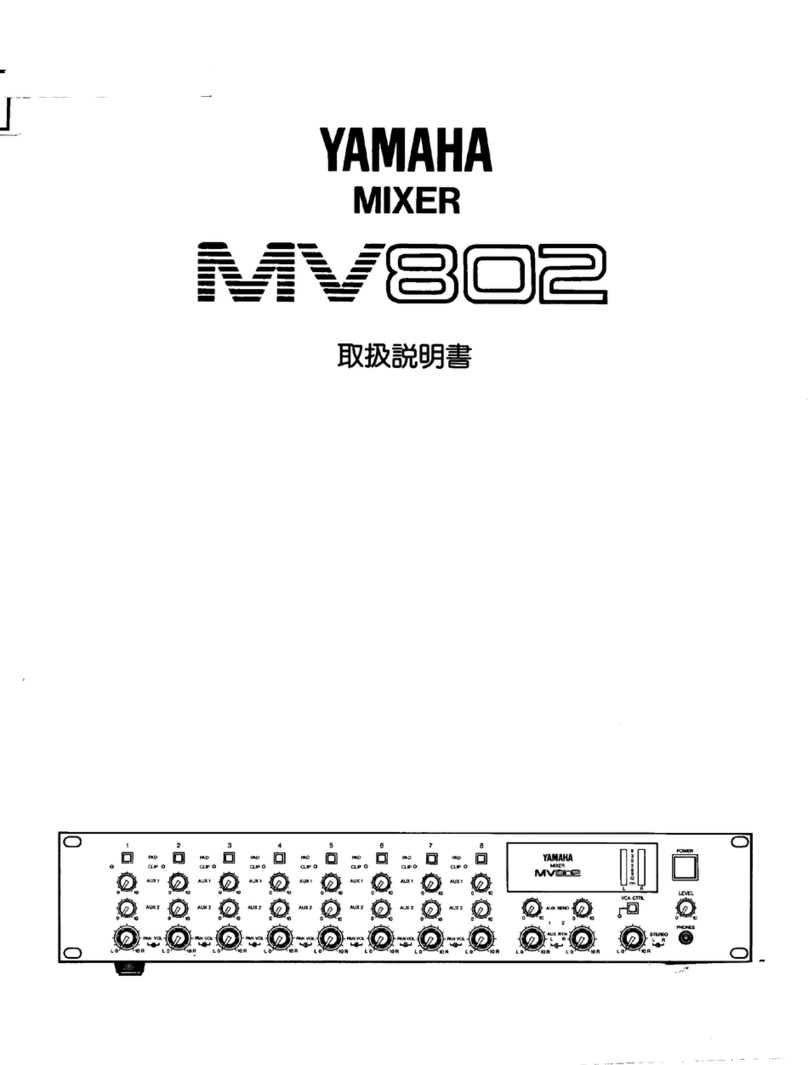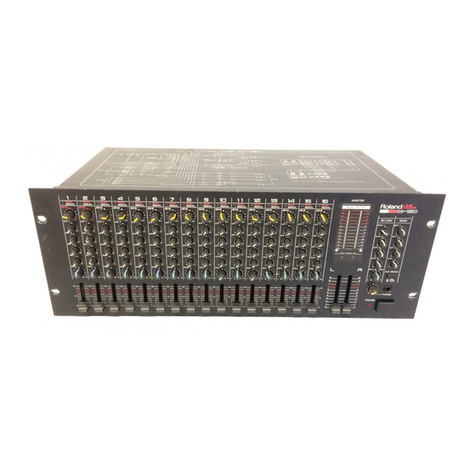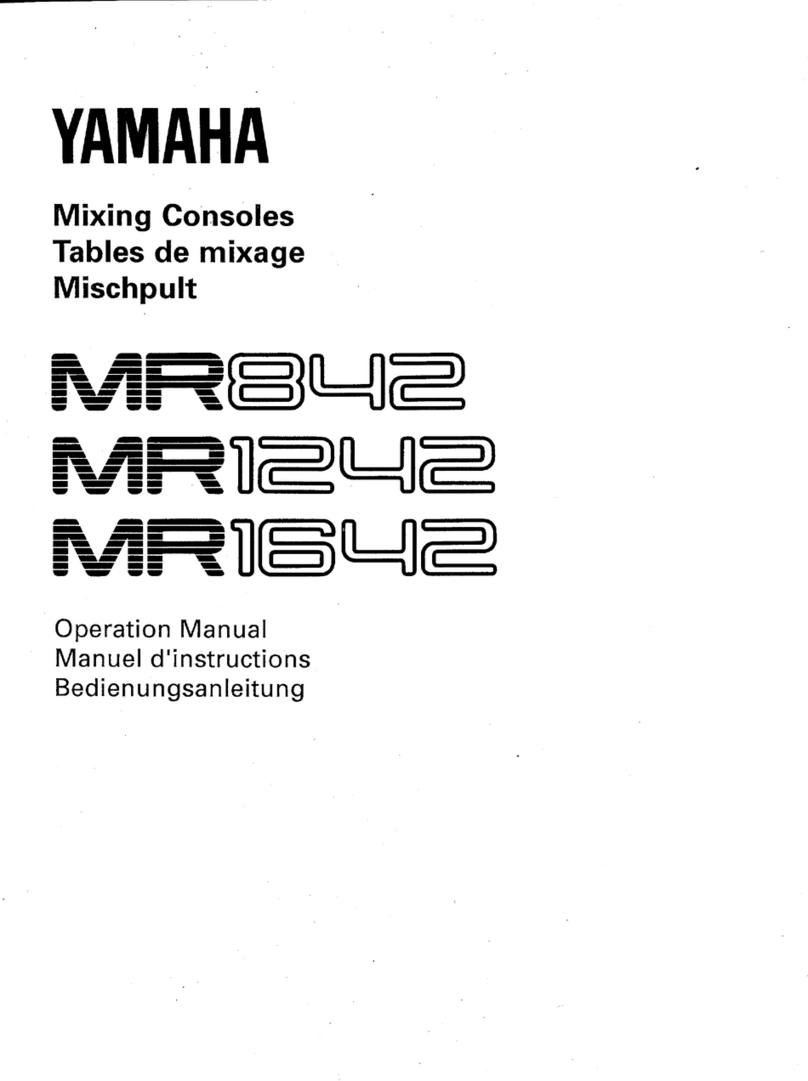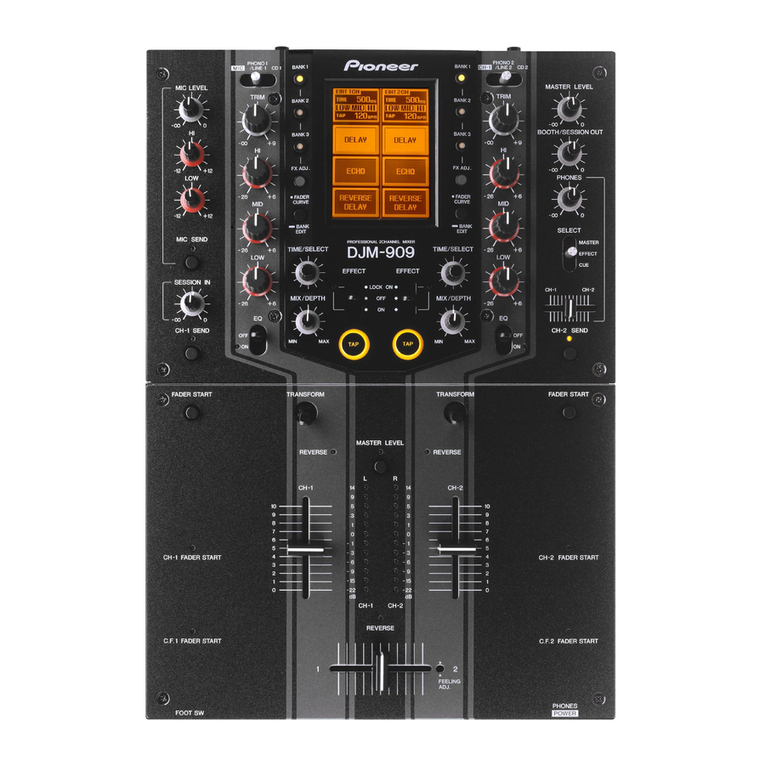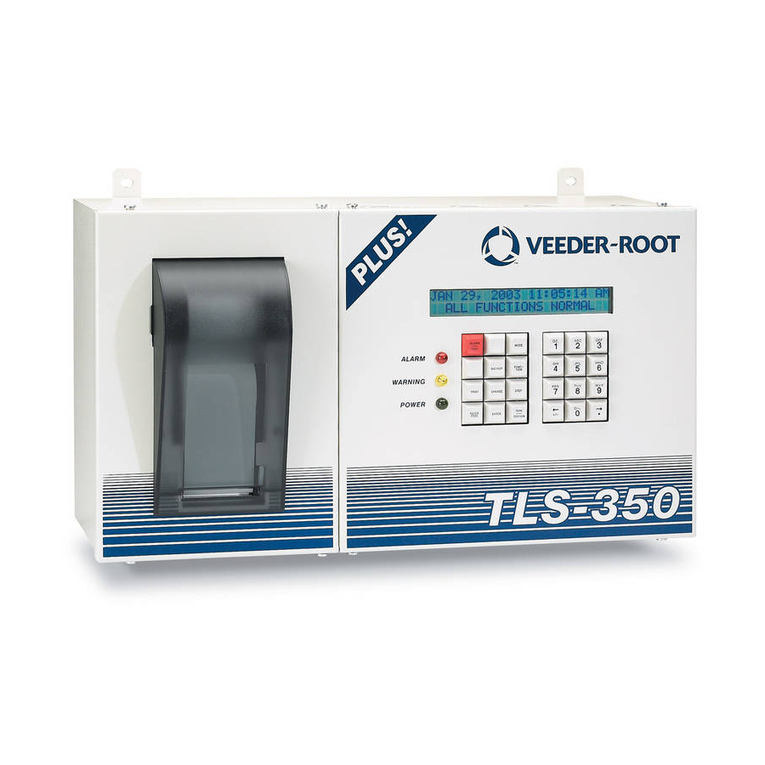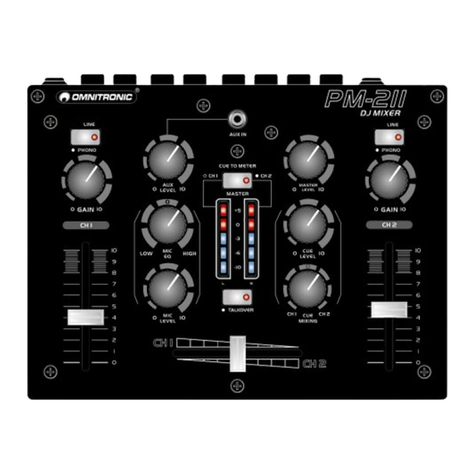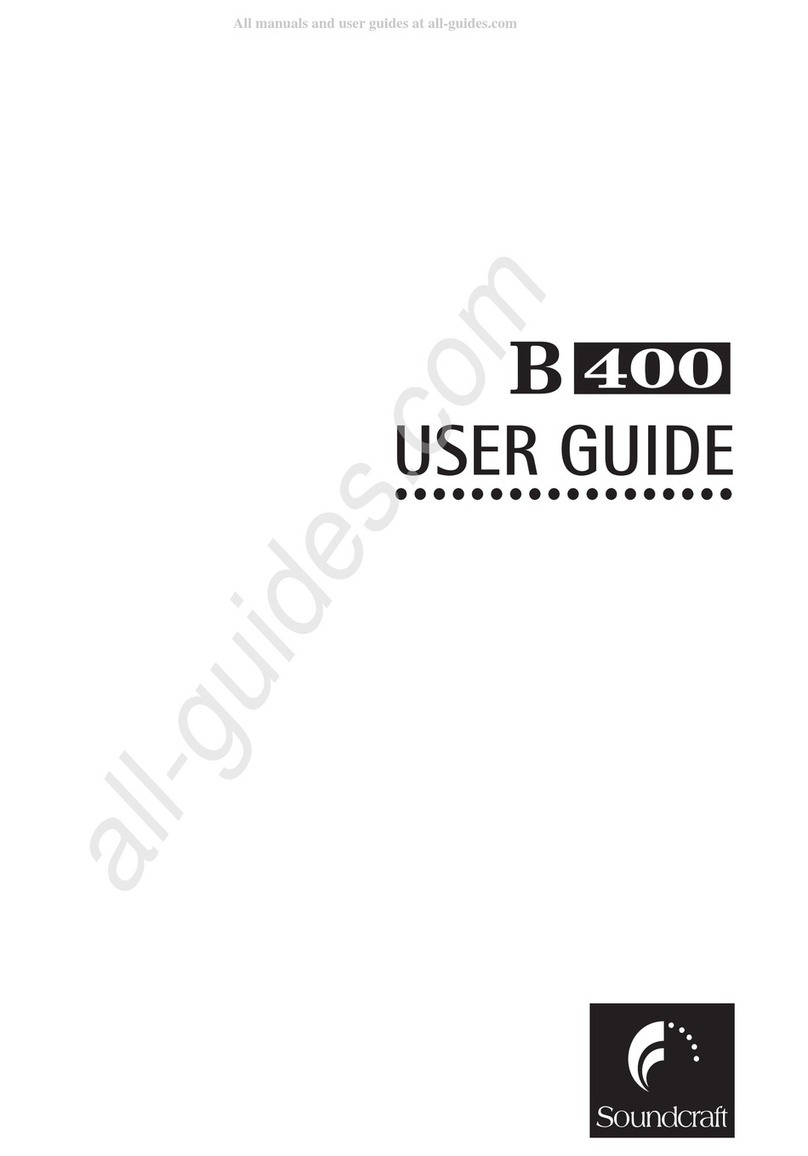10
CARACTERÍSTICAS DEL PANEL SUPERIOR
1
2
3
4
5
67
8
9
10
7
8
9
10
7
8
9
10
18 19
19 20
20
7
8
9
10
7
8
9
10
11
12
13
11
12
13
11
12
13
11
12
13
11
12
13
14
21 22
23
24
25 25
26
15
16
17
1. LED DE ENCENDIDO – Se ilumina cuando el mezclador está encendido.
2. MICRÓFONO SÍ/NO – Conecta y desconecta la entrada de micrófono.
3. GANANCIA DE MICRÓFONO – Ajusta el nivel de audio de la señal de micrófono.
4. GRAVES DE MICRÓFONO – Ajusta las bajas frecuencias (graves) del canal de micrófono.
5. AGUDOS DE MICRÓFONO – Ajusta las altas frecuencias (agudos) del canal de micrófono.
Consejo: Si experimenta realimentación cuando usa un micrófono con niveles altos, pruebe disminuyendo las altas
frecuencias.
6. ENTRADA DE MICRÓFONO – Conecte a esta entrada un micrófono con un cable XLR o de 1/4”.
7. GANANCIA DE CANAL – Ajusta el nivel de ganancia preecualización y pre-fader del audio del canal.
8. TREBLE DE CANAL – Ajusta las altas frecuencias (agudos) del audio que se reproduce en el canal correspondiente.
9. MEDIOS DE CANAL – Ajusta las frecuencias medias del audio que se reproduce en el canal correspondiente.
10. GRAVES DE CANAL – Ajusta las bajas frecuencias (graves) del audio que se reproduce en el canal correspondiente.
11. SELECTOR DE ENTRADAS – Permite seleccionar la fuente de entrada que se aplica al canal correspondiente.
12. FADER DE CANAL – Ajusta el nivel de audio en el canal correspondiente.
13. PFL – Envía el audio pre-fader al canal de Cue para monitoreo con los auriculares.
14. GANANCIA DE CUE – Ajusta el nivel del audio del canal de cue.
15. COMBINACIÓN DE CUE – Deslice este control para mezclar los canales de cue y programa en los auriculares.
Cuando está en el extremo izquierdo, sólo se oyen los canales aplicados al canal de cue. Cuando se gira totalmente a
la derecha, se oye sólo la mezcla del programa.
16. COMBINAR / DIVIDIR – Cuando está pulsado, este botón envía todo el audio del canal de cue al lado izquierdo de los
auriculares y la mezcla de programa al lado derecho de los mismos. Cuando está levantado, es posible controlar el
balance del canal de cue y la mezcla de programa con el fader de combinación de cue.
17. AURICULARES – Conecte sus auriculares de ¼” a esta salida para búsqueda de punto inicial (cue) y monitoreo de la
mezcla.
18. CROSSFADER – Combina el audio entre los canales asignados a los lados izquierdo y derecho del crossfader.
Nota: El usuario puede reemplazar el crossfader en caso de que se desgaste. Simplemente, retire el panel frontal y
luego los tornillos que lo mantienen sujeto. Cambie el fader por un repuesto de calidad autorizado por su vendedor de
Numark más cercano.
19. ASIGNACIÓN DE CROSSFADER – Selecciona cuál canal de entrada se podrá escuchar cuando se mueve el
crossfader hacia esta perilla. Todos los canales no asignados permanecen activos.
20. FADER START – Activa o desactiva el “fader-start” del lado correspondiente del crossfader. Cuando el fader-start está
activado en un lado, el mover el crossfader hacia ese lado hace que cualquier dispositivo compatible con fader-start
(conectado a la salida de fader-start del panel trasero) comience a reproducir.
21. FADER MAESTRO – Ajusta el volumen de salida de la mezcla de programa.
22. ESTÉREO / MONO – Ajusta la mezcla de programa para operación estéreo o mono.
23. BALANCE – Ajusta el balance de audio derecho a izquierdo en todas las salidas (MAESTRA, PARA GRABACIÓN y
ZONA).
24. MODO DEL MEDIDOR – Determina si se envía al INDICADOR DE NIVEL ESTÉREO el audio de la mezcla de
programa o el canal de cue.
25. INDICADOR DE NIVEL ESTÉREO – Monitorea el nivel de audio de la salida de programa o el canal de cue, en función
de la posición del botón METER MODE (Modo del medidor).
26. ZONA – Ajusta el nivel de audio de las salidas para GRABACIÓN y ZONA.
Consejo: Las salidas para GRABACIÓN y ZONA se pueden utilizar también para suministrar audio de nivel de línea a
un controlador de iluminación o sistema de luces activadas por sonido.
